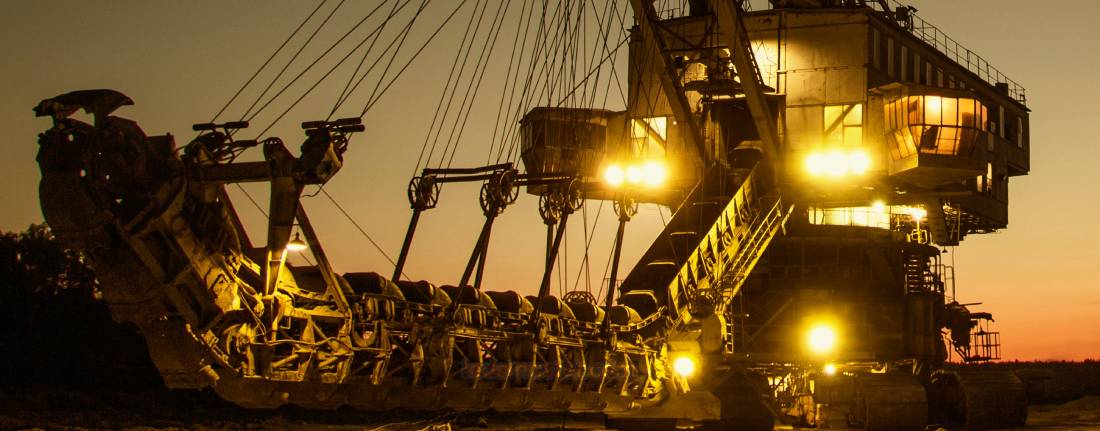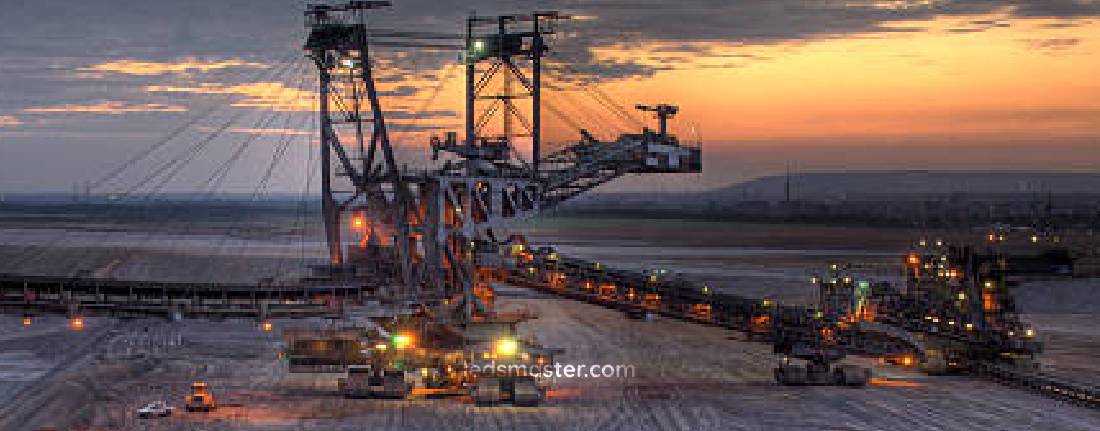Delve into the intricacies of planning lighting installations in mining, we’ll explore the importance of energy efficiency, advanced technologies, and the need for ongoing maintenance—all vital elements in illuminating the path to safer mining practices.
Get your complimentary lighting design today
In environments where visibility can be limited, well-planned lighting installations contribute to the overall productivity and safety of mining personnel. From underground mines to open-pit operations, the choice of lighting solutions and their proper implementation can affect everything from operational efficiency to worker safety.
Table of Contents
ToggleThe first step in any successful lighting installation is thorough planning. A comprehensive understanding of the mining environment is crucial for determining the most effective lighting solutions. Conducting a site assessment allows for a clear identification of specific areas requiring illumination, such as workstations, pathways, and storage areas.

During the site assessment, various factors need to be considered, including the type of mining operation, the presence of equipment, and the natural light conditions. Evaluating these elements helps to establish the specific lighting needs based on the tasks being performed and the potential hazards present in the environment.
Setting lighting requirements involves adhering to established safety standards and regulations. Different tasks may necessitate varying lux levels to ensure that workers can perform their duties safely and efficiently. For instance, areas where detailed work is carried out may require higher lux levels than general walking paths.
Factors such as dust, moisture, and temperature fluctuations can affect the performance of lighting systems. This makes it vital to choose fixtures designed for durability and resilience in harsh conditions.
Another consideration in planning is the potential for energy efficiency. With rising energy costs and an increased focus on sustainability, selecting energy-efficient lighting solutions, such as LED fixtures, can reduce long-term operational costs while minimizing environmental impact. Evaluating the return on investment for different lighting systems can guide decisions in this area.
The installation process involves several steps, each requiring attention to detail to ensure that the lighting system operates effectively and safely. The first stage involves selecting appropriate fixtures based on the specific needs identified during the planning phase. The choice between LED and traditional lighting systems often comes into play at this stage.
LED lighting has become increasingly popular in mining due to its energy efficiency, longevity, and lower heat emission. These attributes are particularly beneficial in environments where heat buildup can pose risks. Moreover, selecting fixtures that are designed to withstand the unique demands of mining, such as shockproof and weather-resistant models, enhances the overall effectiveness of the lighting system.
Once the fixtures have been selected, the next step involves determining the optimal mounting locations and angles for installation. Proper positioning is vital for achieving effective light distribution across work areas. Factors such as fixture height and orientation can dramatically influence the quality of illumination.
During the installation phase, attention must be paid to electrical considerations. Ensuring that the wiring and power supply meet the operational requirements of the lighting system is paramount. In addition, integrating the new lighting system with existing electrical infrastructure requires careful planning to avoid overloading circuits and to maintain system reliability.
Safety measures should be incorporated throughout the installation process. Workers must be trained to follow established safety protocols when handling electrical components and lifting heavy fixtures. Proper personal protective equipment (PPE) should be used to mitigate risks during installation.
After the fixtures have been installed, testing the lighting system is essential to confirm that it meets the specified lux levels and coverage requirements. Adjustments may be necessary to optimize performance, ensuring that the lighting effectively illuminates all necessary areas without creating excessive glare or shadows.
The environment in which mining occurs presents various hazards, making it vital to follow safety protocols rigorously. Compliance with local regulations regarding lighting standards is necessary to ensure that all installations meet the required guidelines.
Workers should be informed about the specific lighting systems in place, including their features and operational requirements. Understanding how to use and maintain the lighting effectively can enhance safety in the workplace.
Regular inspections and maintenance of lighting systems are fundamental practices for sustaining safety standards. Establishing a schedule for checking the functionality of fixtures, replacing any burnt-out bulbs, and cleaning fixtures to remove dust and debris ensures that the lighting remains effective over time. This proactive approach can help prevent unexpected failures that could compromise safety.

In recent years, advancements in lighting technology have introduced new possibilities for enhancing mining operations. Smart lighting systems, which integrate sensors and automation, can significantly improve the effectiveness of lighting installations. These systems can adjust brightness levels based on real-time conditions, ensuring optimal illumination while reducing energy consumption.
Another noteworthy trend is the adoption of renewable energy sources in mining lighting. Solar-powered lighting solutions are increasingly being explored for surface mining operations. By harnessing solar energy, mines can reduce reliance on traditional power sources, lower energy costs, and minimize their environmental footprint. These systems are particularly useful in remote locations where access to the electrical grid may be limited.
Environmental sustainability is becoming a more pressing concern in all industries, including mining. The choice of lighting solutions can have a considerable impact on a mine’s environmental footprint. Selecting energy-efficient fixtures not only reduces operational costs but also contributes to lower greenhouse gas emissions.
In addition to energy efficiency, the disposal of old lighting fixtures must be considered. Many traditional lighting options contain hazardous materials that require special handling and disposal. By opting for LED and other eco-friendly lighting solutions, mines can reduce the environmental impact associated with lighting waste. LED lights have a longer lifespan and do not contain harmful substances, making them a safer option for both the environment and the health of workers.
Moreover, incorporating lighting designs that minimize light pollution can benefit both the mine’s operations and the surrounding ecosystem. Well-designed lighting systems can reduce glare and avoid unnecessary light spillage into nearby habitats, supporting wildlife conservation efforts.
Workers should receive thorough training not only on how to operate the lighting systems but also on identifying potential issues. This empowers them to report any malfunctions quickly, minimizing downtime and enhancing safety.
Regular maintenance schedules must be established to keep the lighting systems functioning optimally. This includes routine checks for wear and tear, ensuring all fixtures are clean, and promptly replacing any damaged or outdated components. A well-maintained lighting system is less likely to fail, which is crucial in maintaining visibility and safety in mining operations.
Incorporating a maintenance management system can streamline this process. By tracking maintenance schedules, inspections, and repairs, mine operators can ensure that all lighting systems remain compliant with safety standards and operational requirements.
Lighting installation in mining operations is a multifaceted process that requires careful planning, execution, and ongoing maintenance. By focusing on proper planning, adopting advanced technologies, and prioritizing safety, mining companies can create effective lighting environments that enhance operational efficiency and ensure the well-being of workers.
Investing in high-quality lighting solutions not only improves visibility but also contributes to a safer, more productive workplace. As technology continues to evolve, the opportunities for innovation in mining lighting will expand, paving the way for more sustainable and efficient practices in the industry. Embracing these changes will position mining operations to meet the challenges of the future while maintaining a commitment to safety and environmental responsibility.
Lighting installation in mining operations is a multifaceted process that requires careful planning, execution, and ongoing maintenance. By focusing on proper planning, adopting advanced technologies, and prioritizing safety, mining companies can create effective lighting environments that enhance operational efficiency and ensure the well-being of workers.
Investing in high-quality lighting solutions not only improves visibility but also contributes to a safer, more productive workplace. As technology continues to evolve, the opportunities for innovation in mining lighting will expand, paving the way for more sustainable and efficient practices in the industry. Embracing these changes will position mining operations to meet the challenges of the future while maintaining a commitment to safety and environmental responsibility.